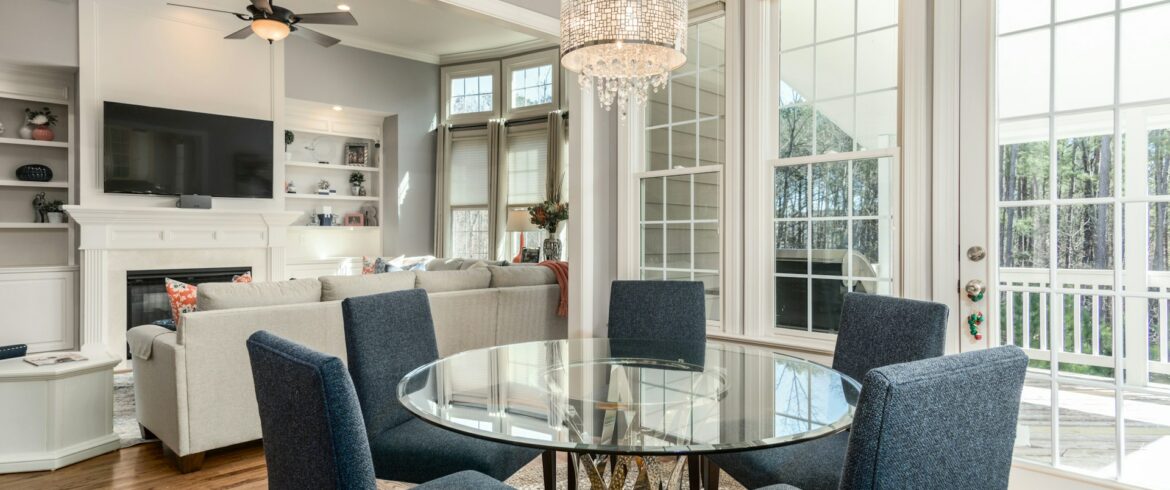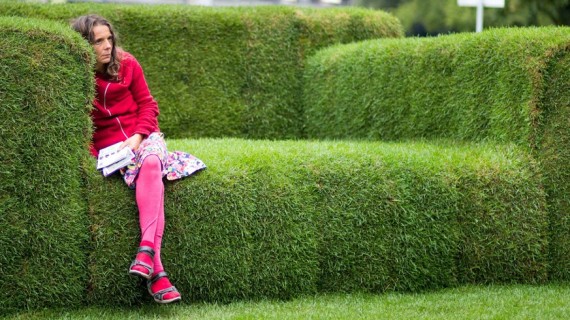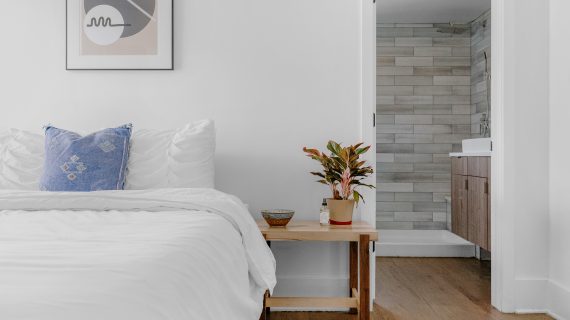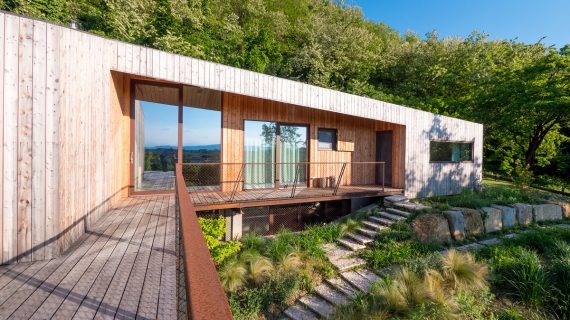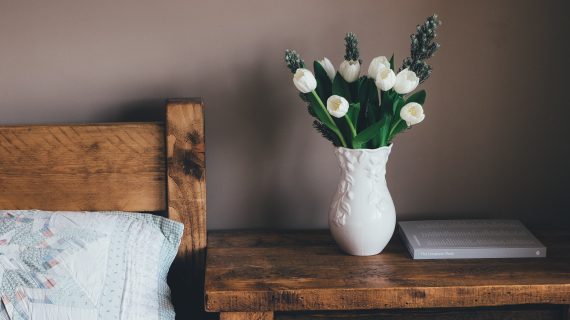Today, homeowners have numerous options when it comes to lighting. Learn how eco-friendly lights add value, efficiency, and sustainability to your home
In today’s world, sustainability is no longer just a trend; it has become a vital part of everyday life. Eco-friendly interior design reflects this growing consciousness, focusing on reducing environmental impact while maintaining aesthetic appeal and functionality. One of the most critical elements in sustainable home design is lighting, which significantly influences energy consumption and overall ecological footprint.
This article delves into the principles of eco-friendly interior design, with a particular focus on sustainable lighting solutions. We’ll explore the benefits of energy-efficient lighting, discuss how choosing eco-friendly elegant ceiling lights and other fixtures can contribute to energy conservation, and provide practical tips for selecting and incorporating these options into your home.
The Core Principles of Eco-Friendly Interior Design
Eco-friendly interior design is about making conscious choices that minimize environmental harm. It’s rooted in energy efficiency, sustainable sourcing, reducing waste, and promoting longevity. When applied to lighting, these principles manifest in the following ways:
Energy efficiency
Sustainable lighting reduces energy consumption, lowers utility bills, and decreases carbon emissions.
Sustainable materials
Fixtures made from recyclable or renewable materials help reduce the demand for virgin resources.
Longevity
High-quality lighting solutions are designed to last longer, reducing the need for bulb replacements and the waste associated with them.
Adaptability
Intelligent lighting systems can adjust based on natural availability or user preferences, optimizing energy use.
When these principles are combined with a thoughtful design approach, you create spaces that are not only beautiful but also environmentally responsible.
The Benefits of Choosing Eco-Friendly Lighting
Incorporating sustainable lighting into your home brings a wide array of benefits, both environmental and practical:
Energy savings and reduced utility bills
Eco-friendly lighting solutions, particularly those that use LED technology, are designed to be highly energy-efficient. Smart LED bulbs consume up to 90 percent less energy than traditional bulbs while emitting the same brightness level. By transitioning to energy-efficient lighting, you can significantly lower your household energy consumption, reducing utility bills.
Smart lighting systems take energy savings a step further by allowing homeowners to schedule lighting use, adjust brightness, and even control lights remotely. This level of automation prevents lights from being left on unnecessarily, optimizing energy use throughout the day.
Lower environmental impact
The use of eco-friendly lighting helps reduce your carbon footprint. LEDs, for example, emit significantly less heat than incandescent bulbs, meaning less energy is wasted. These lighting solutions also have longer lifespans, reducing the number of bulbs that end up in landfills.
Some sustainable lighting options are even designed with recyclable materials, further lessening their environmental impact.
Additionally, manufacturers increasingly incorporate sustainable materials and production practices into their designs. By choosing products from such sources, you support brands prioritizing eco-conscious manufacturing.
Enhanced aesthetic and design flexibility
Sustainable lighting is no longer limited to practical designs. With the growing demand for eco-friendly solutions, designers have developed a wide range of elegant lighting fixtures that offer both form and function. Whether you prefer modern minimalism or more traditional aesthetics, there are sustainable lighting options that can fit seamlessly into your design vision.
Fixtures such as elegant ceiling lights, wall sconces, and floor lamps combine energy efficiency with exquisite craftsmanship, enhancing your home’s aesthetic while adhering to eco-friendly principles.
Improved indoor air quality
Traditional lighting solutions, especially older types like fluorescent lights, can contain harmful chemicals and, if not disposed of properly, affect indoor air quality.
Eco-friendly lighting solutions like LEDs are free of hazardous substances, ensuring a healthier living environment. By switching to sustainable lighting, you help the environment and create a safer, toxin-free atmosphere inside your home.
Practical Tips for Incorporating Sustainable Lighting into Various Rooms
Now that we’ve covered the benefits, let’s explore how to integrate sustainable lighting into different areas of your home. Each room has specific lighting needs, and with thoughtful design, you can balance functionality, energy efficiency, and aesthetic appeal.
Living room: creating an inviting atmosphere
The living room is often the centerpiece of a home, where lighting must be functional and inviting. Elegant ceiling lights, such as chandeliers, pendant lights, or recessed fixtures, can provide ambient light while contributing to the overall design theme.
Sustainable lighting tips for the living room
Opting for sustainable lighting solutions in the living room enhances the atmosphere and energy efficiency.
- LED chandeliers: A statement chandelier with energy-efficient LED bulbs can illuminate the room without consuming excessive energy. LEDs also offer a range of warmth or color temperatures, enabling you to choose the perfect warmth for your living space.
- Dimmable lighting: Install dimmable ceiling lights to control the brightness based on the time of day or occasion. Lowering the light intensity sets a more relaxed mood and reduces energy consumption.
- Smart lighting: Incorporating innovative lighting systems allows you to automate the lighting in your living room. You can schedule your lights to turn on or off at designated times or control them remotely via a smartphone app.
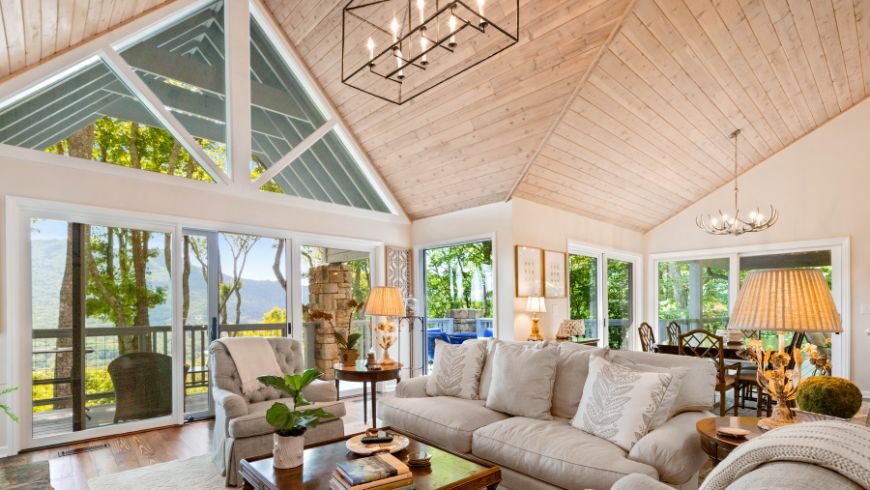
Bedroom: soft lighting for relaxation
In the bedroom, lighting should promote relaxation while being energy-efficient.
Sustainable lighting tips for the bedroom
Soft, ambient lighting can create a calming environment, while task lighting is essential for night reading or other activities.
- Ceiling fixtures with LED bulbs: Flush-mounted or semi-flush-mounted ceiling fixtures equipped with LED bulbs offer ample light while keeping energy consumption low. LEDs with warm color temperatures create a cozy, restful atmosphere.
- Dimmable Lights: Consider installing dimmable lights in your bedroom to adjust brightness based on the time of day. Dimming the room lights in the evening can help signal your body that it’s time to wind down.
- Natural materials: To align with eco-friendly design principles, look for lighting fixtures made from sustainable materials, such as bamboo or recycled metal.
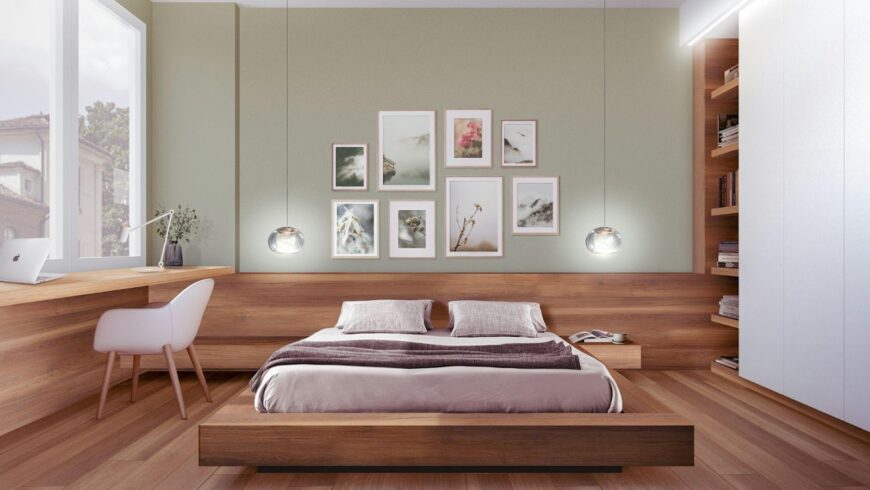
Choose Eco-Friendly Lighting for a Well-Designed and Sustainable Future
Incorporating sustainable lighting into your interior design is an impactful way to reduce your environmental footprint while enhancing the beauty and functionality of your home.
From the living room to the kitchen and bathroom, eco-friendly lighting solutions such as LED bulbs, smart controls, and sustainable materials offer numerous benefits, including tremendous energy savings, improved indoor air quality, and versatility.
Homeowners can seamlessly integrate sustainable lighting into their spaces without sacrificing elegance by selecting high-quality, stylish lighting options from trusted sources. Sustainable lighting is not just a design trend—it’s a lasting investment in the environment and your home.
Cover image: photo by Douglas Sheppard su Unsplash
